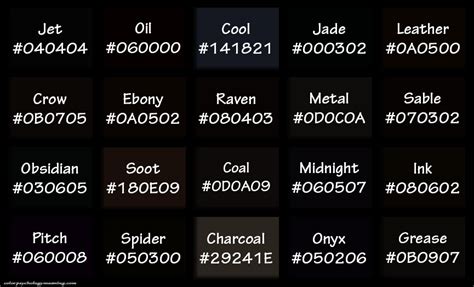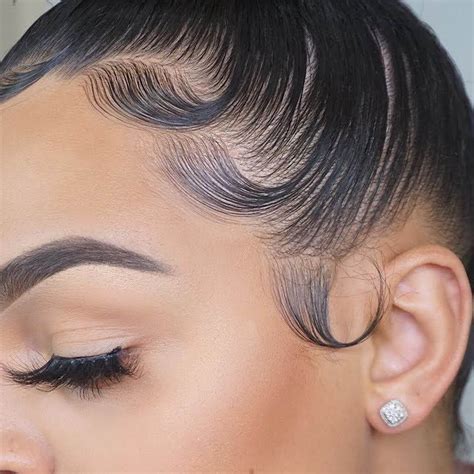Introduction

Edges, the delicate frame that accentuates the hairline, play a significant role in shaping your overall hairstyle. With the rise of intricate and stylized hair designs, edges have become an essential element in completing any look. This comprehensive guide will delve into the world of edges for hair, exploring techniques, products, and inspirations to help you achieve flawless edges that will elevate your style.
What Are Edges?
Edges refer to the hairline that surrounds the forehead, temples, and nape. They mark the transition between the hair and the skin, creating a defined line that complements the hairstyle. By shaping and defining edges, you can enhance the precision and sophistication of your look.
Why Do Edges Matter?
Well-defined edges serve several important purposes:
- Frame the face: Edges accentuate the face shape, highlighting your features and enhancing your overall appearance.
- Complement hairstyles: Edges provide a seamless transition between different hair sections, making hairstyles look more cohesive and polished.
- Create depth and dimension: Defined edges create a 3D effect, adding depth and interest to your hairstyle.
- Prevent frizz and flyaways: By smoothing and setting edges, you can control frizz and flyaways, keeping your hairstyle looking neat and tidy.
The Science Behind Edges
The appearance of edges is influenced by several factors:
- Hair texture: Fine hair may be more prone to frizz, while thick hair can be more difficult to define.
- Hair length: Longer hair provides more length to work with for shaping and defining edges.
- Scalp shape: The shape of your scalp can affect the position and curvature of your edges.
Step-by-Step Guide to Perfect Edges
Achieving perfect edges requires a combination of technique, products, and patience. Follow these steps to master the art:
- Cleanse and condition: Start with clean, well-conditioned hair to ensure edges are smooth and manageable.
- Detangle: Gently brush or comb your hair to remove any knots or tangles.
- Section: Separate the area around your hairline into smaller sections for easier edge shaping.
- Apply gel: Use a strong-hold gel or edge control product along your hairline, smoothing it in with a toothbrush or small brush.
- Lay the edges: Hold the hair in place along the desired edge line and use a flat brush or comb to smooth the hair down.
- Secure: Once the edges are laid, use a hairspray or edge control product to set them in place.
Edge Styles and Techniques
There are various edge styles and techniques to choose from:
- Slick edges: Smooth and sleek edges that follow the natural hairline.
- Curved edges: Edges that curve around the forehead or temples, creating a more angular look.
- Baby hair edges: Soft, short hairs that frame the forehead, adding texture and interest.
- Embellished edges: Edges decorated with accessories such as beads, rhinestones, or hair clips.
The Psychology of Edges
Edges hold both aesthetic and psychological significance. They can convey a sense of confidence, precision, and style. According to a study published in the Journal of Nonverbal Behavior, individuals with defined edges are perceived as more attractive and trustworthy.
Motivations for Shaping Edges
Customers seeking to shape their edges are driven by various motivations:
- Desire for precision and control: Edges provide a way to create a clean and polished look.
- Expression of creativity: Edges can be a canvas for self-expression, allowing individuals to create unique and personal designs.
- Protection from frizz and flyaways: Well-defined edges can help keep frizz and flyaways under control.
- Enhancement of hairstyles: Edges complement hairstyles by adding depth, dimension, and a sense of completion.
Pain Points in Edge Shaping
Customers may encounter challenges in edge shaping:
- Frizz and flyaways: Unmanageable hair can make it difficult to define and maintain edges.
- Time-consuming process: Shaping edges can be a time-consuming task, especially for intricate styles.
- Damage to hair: Excessive use of strong-hold products or heat styling tools can damage the hair around the hairline.
Products for Edge Shaping
The market offers a wide range of products to assist in edge shaping:
| Product Type | Function |
|---|---|
| Edge control gels | Provide strong hold and definition |
| Edge brushes | Smooth and lay down edges |
| Edge wax | Adds texture and shine |
| Hairspray | Sets and secures edges |
| Edge taming serums | Control frizz and flyaways |
Revolutionary Edge Shaping Techniques
Innovations in edge shaping techniques continue to emerge:
- Magnetic edge brushes: Use magnets to hold hair in place, creating precise and consistent edges.
- Edge cutting stencils: Provide a guide for cutting edges to achieve a specific shape or design.
- Edge enhancement tools: Include accessories like hair clippers and razors for precision edge shaping.
Future of Edges
The future of edges is bright, with emerging trends and advancements:
- Personalized edge designs: Customers will have access to customized edge styles tailored to their unique hair and face shape.
- Innovative products: New products will be developed to address specific pain points and enhance edge shaping capabilities.
- Virtual edge shaping: Augmented reality and artificial intelligence technologies will enable virtual edge shaping consultations and experimentation.
Conclusion
Edges for hair are a transformative element that can elevate your hairstyle and enhance your overall appearance. By understanding the science behind edges, mastering shaping techniques, and embracing creative styles, you can achieve flawless edges that will define your style and boost your confidence. As the world of edge shaping continues to evolve, embrace the latest innovations and stay inspired to create your own unique edge designs.
